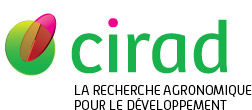Bournez Laure, Cangi N., Lancelot Renaud, Pleydell David, Stachurski Frédéric, Bouyer Jérémy, Martinez Dominique, Lefrançois Thierry, Neves Luis, Pradel Jennifer. 2015. Parapatric distribution and sexual competition between two tick species, Amblyomma variegatum and A. hebraeum (Acari, Ixodidae), in Mozambique. Parasites and Vectors, 8 (504), 14 p.

|
Version publiée
- Anglais
Sous licence  . .
Bournez_et_al_2015.pdf Télécharger (2MB) | Prévisualisation |
Quartile : Q1, Sujet : PARASITOLOGY
Résumé : Background Amblyomma variegatum and A. hebraeum are two ticks of veterinary and human health importance in south-east Africa. In Zimbabwe they occupy parapatric (marginally overlapping and juxtaposed) distributions. Understanding the mechanisms behind this parapatry is essential for predicting the spatio-temporal dynamics of Amblyomma spp. and the impacts of associated diseases. It has been hypothesized that exclusive competition between these species results from competition at the levels of male signal reception (attraction-aggregation-attachment pheromones) or sexual competition for mates. This hypothesis predicts that the parapatry described in Zimbabwe could also be present in other countries in the region. Methods To explore this competitive exclusion hypothesis we conducted field surveys at the two species' range limits in Mozambique to identify areas of sympatry (overlapping areas) and to study potential interactions (communicative and reproductive interference effects) in those areas. At sympatric sites, hetero-specific mating pairs were collected and inter-specific attractiveness/repellent effects acting at long and short distances were assessed by analyzing species co-occurrences on co-infested herds and co-infested hosts. Results Co-occurrences of both species at sampling sites were infrequent and localized in areas where both tick and host densities were low. At sympatric sites, high percentages of individuals of both species shared attachment sites on hosts and inter-specific mating rates were high. Although cross-mating rates were not significantly different for A. variegatum and A. hebraeum females, attraction towards hetero-specific males was greater for A. hebraeum females than for A. variegatum females and we observed small asymmetrical repellent effects between males at attachment sites. Conclusions Our observations suggest near-symmetrical reproductive interference between A. variegatum and A. hebraeum, despite between-species differences in the strength of reproductive isolation barriers acting at the aggregation, fixation and partner contact levels. Theoretical models predict that sexual competition coupled with hybrid inviability, greatly reduces the probability of one species becoming established in an otherwise suitable location when the other species is already established. This mechanism can explain why the parapatric boundary in Mozambique has formed within an area of low tick densities and relatively infrequent host-mediated dispersal events.
Mots-clés Agrovoc : Amblyomma variegatum, Amblyomma hebraeum, compétition biologique, interactions biologiques, hybridation, viabilité, reproduction, Enquête organismes nuisibles, distribution spatiale, dynamique des populations, écologie animale, distribution géographique
Mots-clés géographiques Agrovoc : Mozambique, Zimbabwe
Mots-clés complémentaires : Parapatrie
Mots-clés libres : Exclusive competition, Reproductive interference, Communicative interference, Parapatry, Hybrid inviability, Tick, Amblyomma, Mozambique
Classification Agris : L72 - Organismes nuisibles des animaux
L20 - Écologie animale
Champ stratégique Cirad : Axe 4 (2014-2018) - Santé des animaux et des plantes
Auteurs et affiliations
- Bournez Laure, CIRAD-BIOS-UMR CMAEE (GLP)
- Cangi N., Eduardo Mondlane University (MOZ)
- Lancelot Renaud, CIRAD-BIOS-UMR CMAEE (FRA)
- Pleydell David, INRA (GLP)
- Stachurski Frédéric, CIRAD-BIOS-UMR CMAEE (FRA)
-
Bouyer Jérémy, CIRAD-BIOS-UMR CMAEE (SEN)
 ORCID: 0000-0002-1913-416X
ORCID: 0000-0002-1913-416X
- Martinez Dominique, CIRAD-EMVT-ELEVAGE-AGRICULTURE (GLP)
-
Lefrançois Thierry, CIRAD-BIOS-UMR CMAEE (FRA)
 ORCID: 0000-0001-8793-5228
ORCID: 0000-0001-8793-5228
- Neves Luis, Eduardo Mondlane University (MOZ)
- Pradel Jennifer, CIRAD-BIOS-UMR CMAEE (GLP)
Source : Cirad-Agritrop (https://agritrop.cirad.fr/577660/)
[ Page générée et mise en cache le 2024-01-28 ]




